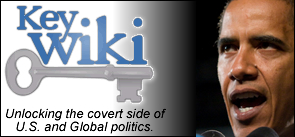Trump Announces 1776 Commission
By: Denise Simon | Founders Code Patriotism, factual history, and civics could make a comeback in...
Read Moreby TMH | Sep 18, 2020 | American Revolution, American Stuff, Authors, Constitution, Denise Simon, Founding Fathers, History, News, Politics | 0 |
By: Denise Simon | Founders Code Patriotism, factual history, and civics could make a comeback in...
Read Moreby TMH | Jul 4, 2020 | American Revolution, American Stuff, Authors, Cliff Kincaid, Constitution, Founding Fathers, History, News, Politics, Terrorism | 0 |
By: Cliff Kincaid It was a highlight when I received the Andrew Jackson “Champion of...
Read Moreby TMH | Apr 16, 2020 | 2nd Amendment, American Revolution, American Stuff, History, News, Politics | 0 |
By: Sam Jacobs | Ammo.com While it’s not celebrated too widely outside of New England, Patriots’...
Read Moreby TMH | Dec 9, 2019 | 2nd Amendment, American Revolution, American Stuff, Founding Fathers, History, Politics | 0 |
Ammo.com The Culpeper Flag is often mistaken as a modern variation of the iconic “Don’t Tread On...
Read Moreby TMH | Jul 4, 2019 | American Revolution, American Stuff, Founding Fathers, History | 0 |
Ammo.com Second only to Old Glory itself, the Betsy Ross Flag is the American icon. Its clean...
Read Moreby TMH | Jul 4, 2019 | American Revolution, American Stuff, Founding Fathers, History | 0 |
Ammo.com Every American knows what Independence Day is. Alongside Christmas and Thanksgiving, it’s...
Read Moreby TMH | Jul 15, 2016 | American Revolution, American Stuff, Constitution, Founding Fathers, History, Politics | 0 |
By: Renee Nal | New Zeal In 2009, Hillary Clinton won the Margaret Sanger Award. Margaret Sanger,...
Read Moreby TMH | Jul 6, 2016 | 2nd Amendment, American Revolution, American Stuff, Authors, Constitution, Politics, Terresa Monroe-Hamilton | 4 |
By: Terresa Monroe-Hamilton I have lost all faith in both parties and our government. Yesterday,...
Read Moreby TMH | May 5, 2016 | 2nd Amendment, American Revolution, American Stuff, Authors, Constitution, Financial, Founding Fathers, History, Illegal Immigration, Military, Pandemics, Politics, Question(s) of the Day, Religion, Survival, Taxation, Terresa Monroe-Hamilton, Terrorism | 0 |
The Watcher’s Council Welcome to the Watcher’s Council, a blogging group consisting of some...
Read Moreby TMH | May 1, 2016 | 2nd Amendment, American Revolution, American Stuff, Constitution, Financial, Founding Fathers, History, Illegal Immigration, Military, Pandemics, Politics, Question(s) of the Day, Religion, Survival, Taxation, Terrorism | 0 |
The Watcher’s Council The Council has spoken, the votes have been cast and the results are...
Read Moreby TMH | Apr 28, 2016 | 2nd Amendment, American Revolution, American Stuff, Authors, Constitution, Financial, Founding Fathers, History, Illegal Immigration, Military, Pandemics, Politics, Question(s) of the Day, Religion, Survival, Taxation, Terresa Monroe-Hamilton, Terrorism | 0 |
The Watcher’s Council Welcome to the Watcher’s Council, a blogging group consisting of some...
Read Moreby TMH | Apr 24, 2016 | 2nd Amendment, American Revolution, American Stuff, Authors, Constitution, Financial, Founding Fathers, History, Illegal Immigration, Military, Pandemics, Politics, Question(s) of the Day, Religion, Survival, Taxation, Terresa Monroe-Hamilton, Terrorism | 0 |
The Watcher’s Council The Council has spoken, the votes have been cast and the results are...
Read More

My beloved husband,
GARRY HAMILTON,
passed away
on September 24th, 2022.
I will love you always.

